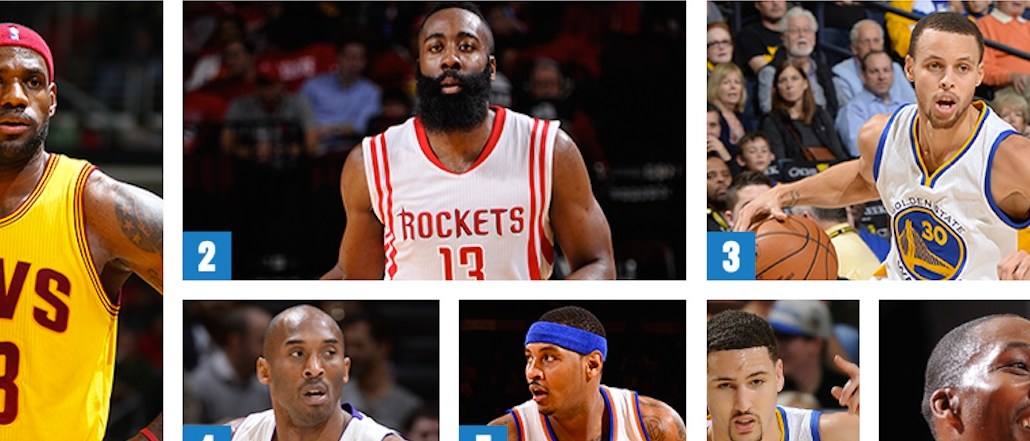
When Golden State Warrior point guard Stephen Curry brought his adorable 2-year-old daughter, Riley, to a post-game press conference on May 19, social media lit up. Curry’s mentions on Twitter skyrocketed — and his rank on the Pulse, NBA.com’s social hub, moved up to No. 1.
Unwilling to be scooped on their own exclusive, the NBA’s in-house editorial team took note, and quickly posted a story about the incident on NBA.com — ahead of competitive sports news sites ESPN and Bleacher Report. It’s one way for NBA.com to try and stay ahead of those competitors, which dwarf it in terms of traffic. Instead of beating them on numbers, NBA.com is trying to beat them by being newsier.

This seamless transition from what was trending on social media to what appeared on the NBA’s content hub is no accident. To make it happen, it worked with social platform company Spredfast, which has, to date, worked with hundreds of brands to figure out a better way to use social data to make real-time, real-life decisions.
Robert Occhialini, vp NBA Digital products, said that Pulse was initially a standalone product that was just a hub on the site. When the company saw how it was working, it expanded it across the properties. “Early on, it was a good fan destination,” said Spredfast head of sports Brian Foley. Now, said Foley, the NBA breaks out elements of the Pulse across NBA.com. So, on any story about a player, there’s a Pulse that shows his rank on social media.
“Properties like Bleacher Report have have enjoyed considerable financial success employing this approach so it’s a logical move for the NBA,” said Bill Wollert, digital investment director, Optimum Sports, which is Omnicom Media Group’s sports media and marketing agency. “The financial upshot lies in appealing to a broader audience and in being first to report the social media news. The combination can potentially drive higher traffic levels and increased advertiser revenue.”
Keeping content relevant — and resonant — in a given news cycle is a problem facing brands and publishers alike. Publishers like Bloomberg have been experimenting with making native advertising newsy by pulling in data to see what’s hot in the cycle at that moment and cutting down the approval processes necessary so content can move faster.
What keeps the the Pulse beating is the fact that the NBA enjoys the highest player adoption of social media across all sports: Nearly 90 percent of NBA players are active on Twitter and Instagram, compared to, say, the National Hockey League, which is at 15 percent. The Pulse started as a hub to monitor which players were trending and why. So if LeBron James shot up to No. 1, people could click through and find a dashboard that explained what had happened to make that possible.
“Sports trends and conversations ebb and flow based on the amazing moments that NBA games provide,” said Occhialini. “There are many additional content opportunities for a product like Pulse that can keep track of visualizing the data and provide context for the moment.” Immediacy is key, and that’s been a theme we have tried to integrate into our editorial approach.”
The data gathered by the Pulse informs NBA edit staffers and lets them stay in the news cycle — and ahead of its competitors. Sometimes, said Foley, there’s an obvious reason someone might trend, but sometimes, it’s something smaller, which lets writers craft a piece quickly — a sort of editorial fast break. There is also a broadcast tie-in in the words, with plans to integrate the Pulse into both NBA TV and NBA on TNT studio shows to inform coverage.
“The moment something happens, a writer publishes content provided to the NBA audience, where the conversations were ripe to be had, in real time, further fueling the conversation and debate,” said Occhialini.
“Often, rankings on sports sites are all about performance,” said Foley. “This shows that there’s more to it.”
More in Marketing

Ad Tech Briefing: Start-ups are now table stakes for the future of ad tech
Scaled ad tech companies need to maintain relationships with startups, when the sector is experiencing ongoing disruption due to AI.

Inside Kristi Argyilan’s RMN playbook: Lessons from the ‘godmother’ of retail media
Uber’s global head of advertising Kristi Argyilan says the future of retail media hinges on real-time relevance, brand differentiation, and breaking free from a one-size-fits-all playbook.

Digiday+ Research: More than half of marketers invest in TV and streaming, with an eye on impressions and branding
The majority of marketers are directing ad spend toward TV, with a focus on ads that drive impressions and branding.





